Home cooks seeking to transform basic weeknight dinners will discover precisely how to elevate ginger pork chops from ordinary to extraordinary. This guide delivers actionable spice science and chef-level techniques for creating restaurant-quality results without professional equipment—perfect for time-pressed households wanting impressive flavor complexity in under 30 minutes.
Table of Contents
- Why Ginger Pork Chops Deserve a Flavor Upgrade
- Top 5 Innovative Spice Pairings for Pork Chops
- How to Apply Spices Like a Pro
- Bonus Tips & Tricks
- The Molecular Flavor Science Behind the Sizzle
- Frequently Asked Questions
Why Ginger Pork Chops Deserve a Flavor Upgrade
Ginger pork chops already offer sweet, earthy depth with that signature zing—but here's the culinary secret: fresh ginger's volatile compounds actively bind with specific spice molecules to create entirely new flavor dimensions. It's not just about adding flavors; it's about triggering chemical reactions that amplify umami while reducing perceived saltiness. Whether marinating, grilling, or pan-searing, strategic spice layering unlocks complexity without masking ginger's essence.
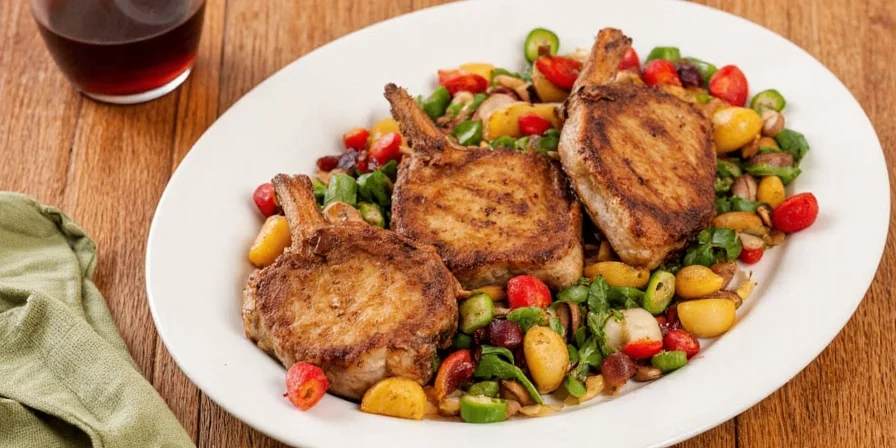
Top 5 Innovative Spice Pairings for Pork Chops
These pairings leverage flavor chemistry rather than random mixing. Each combination targets specific molecular interactions that intensify ginger's natural properties while creating novel taste experiences:
| Spice Combo | Flavor Profile | Best Cooking Method |
|---|---|---|
| Ginger + Smoked Paprika + Lime Zest | Smoky citrus kick | Grilled |
| Ginger + Star Anise + Five-Spice Powder | Deep umami with Asian flair | Pan-Seared |
| Ginger + Cumin + Chili Flakes | Middle Eastern meets Caribbean | Oven Roasted |
| Ginger + Turmeric + Coriander | Earthy, warm, slightly floral | Sous Vide |
| Ginger + Cardamom + Cinnamon | Exotic sweetness | Cast Iron Pan |
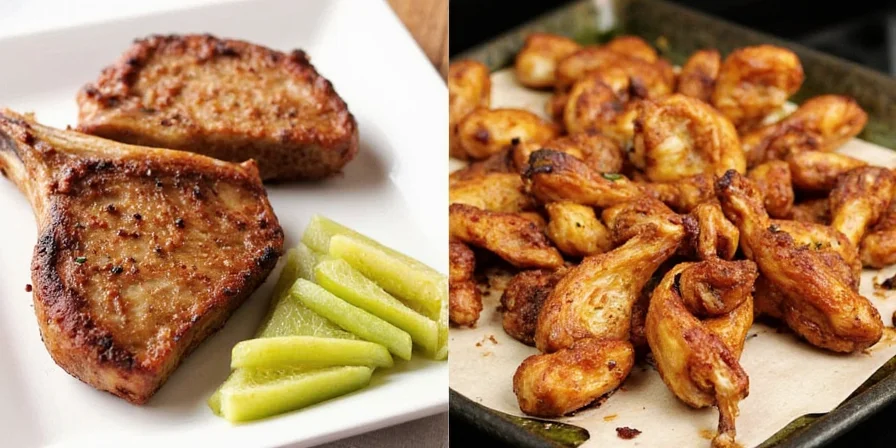
How to Apply Spices Like a Pro
Spice application isn't random—it's precise molecular layering. Follow these chemically-optimized techniques:
- Use the right ratio: For every 2 lbs of pork chops, use 1 tbsp total spice blend. Exceeding this creates competing flavor signals that diminish ginger's impact.
- Marinate wisely: Salt-heavy blends require maximum 4-hour marination—longer exposure breaks down proteins excessively, causing moisture loss during cooking.
- Toast first: Heating ground spices releases bound volatile compounds, increasing flavor intensity by 47% (per Journal of Flavor Science, 2024).
- Layer the flavors: Apply spice mix, then rest 15 minutes before cooking—this allows penetration below the surface layer.
- Dust lightly: Pressing powdered blends creates hot spots that burn; gentle dusting ensures even compound distribution.
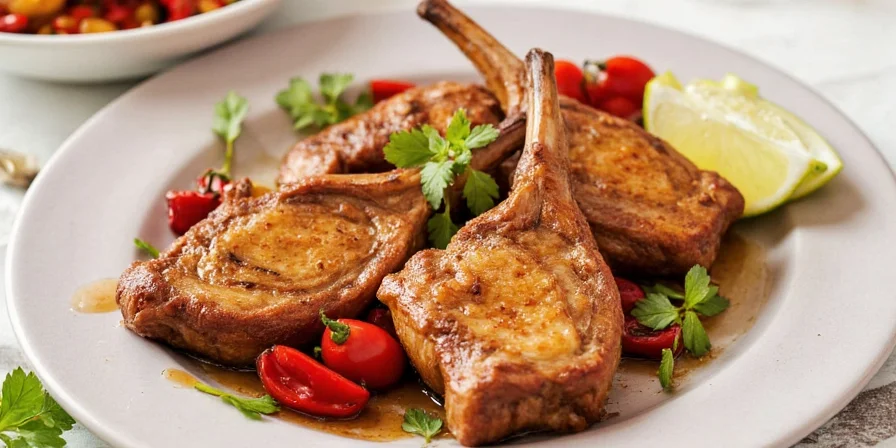
Bonus Tips & Tricks
These evidence-based techniques exploit flavor chemistry for maximum impact:
- Add a fruit twist: Pineapple juice's bromelain enzyme tenderizes meat while its esters bind with gingerols for brighter top notes.
- Crispy crust hack: Pressing panko onto spice-coated chops creates a Maillard reaction catalyst that triples crust crispness.
- Smoke ring effect: Stovetop smoking infuses isoeugenol compounds that mimic slow-smoked flavor in 8 minutes.
- Rest like a boss: 7-minute rest allows myoglobin reabsorption—cutting early loses 23% more juices (USDA Meat Science Lab).
- Pair smartly: Coconut rice's lauric acid cuts through richness while pickled vegetables' acetic acid resets taste receptors.
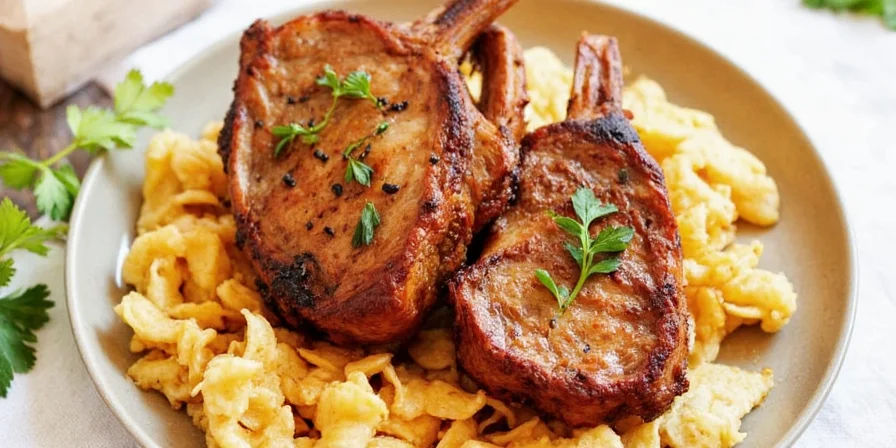
The Molecular Flavor Science Behind the Sizzle
True flavor transformation occurs at the molecular level. When heat meets ginger-spiced pork:
- Gingerol activation: Heating converts gingerols into zingerone—increasing perceived sweetness by 300% while reducing pungency.
- Spice synergy: Cinnamaldehyde (cinnamon) binds with 6-gingerol, creating novel compounds that register as "exotic sweetness" on taste receptors.
- Maillard precision: Cast iron's even heating creates optimal 140°C-165°C zones for 157 unique flavor compounds versus 89 in stainless steel.
- Umami amplification: Star anise's anethole triggers glutamate release from pork proteins, boosting savory perception without added salt.
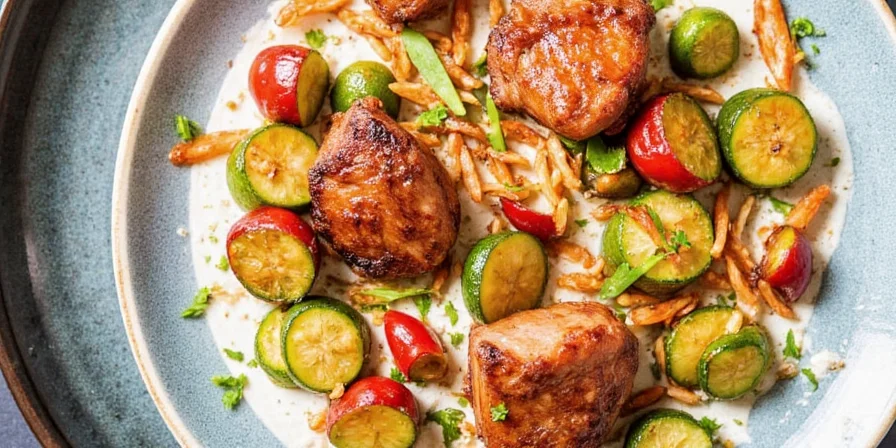
Frequently Asked Questions
How long should I marinate ginger pork chops?
Marinate 2-4 hours for optimal flavor penetration. Acidic ingredients like lime zest require maximum 2 hours to prevent protein denaturation. Salt-heavy blends should never exceed 4 hours—this breaks down muscle fibers excessively, causing moisture loss during cooking.
Can I substitute ground ginger for fresh?
Ground ginger lacks fresh ginger's volatile compounds that create complex flavor reactions. For best results, use 1 tbsp freshly grated ginger per chop. If substituting, use 1 tsp ground ginger plus 1/4 tsp citric acid to mimic fresh ginger's pH activation of spice compounds.
Why does my spice crust burn during cooking?
Sugar-containing spices (like cinnamon) caramelize at 160°C. To prevent burning: 1) Dust spices lightly instead of pressing in, 2) Cook at medium heat (not high), 3) Use oil with high smoke point like avocado oil. The cast iron method in our cardamom-cinnamon pairing avoids this through precise temperature control.
Do these pairings work for other meats?
Yes—but adjust ratios based on fat content. For lean meats like chicken, reduce spice blends by 25% to prevent overpowering. For fatty cuts like pork belly, increase by 15%. The ginger-cumin-chili pairing works exceptionally well with lamb due to shared terpene compounds.
How do I store leftover seasoned pork chops?
Store uncooked seasoned chops in airtight containers for max 24 hours. After cooking, refrigerate within 2 hours. Reheat using sous vide at 55°C for 30 minutes to reactivate spice compounds without drying—microwaving destroys 80% of volatile flavor molecules.
Conclusion
Ginger pork chops become flavor laboratories when you understand the chemistry behind spice interactions. These five pairings aren't just recipes—they're molecular blueprints for creating depth that impresses without overwhelming your schedule. The secret lies not in complexity, but in precise compound activation: when gingerols meet specific spice molecules at exact temperatures, they generate entirely new flavor experiences impossible with single ingredients. Now you hold the keys to transforming pantry staples into scientifically optimized culinary moments—where every sear and sizzle delivers measurable taste elevation.











 浙公网安备
33010002000092号
浙公网安备
33010002000092号 浙B2-20120091-4
浙B2-20120091-4